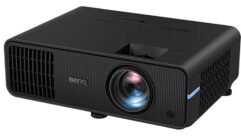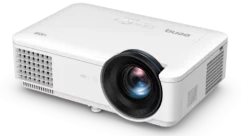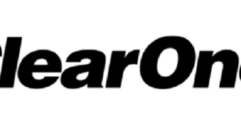
Projection Trends in the Education Market
Apr 2, 2008 12:00 PM,
By Linda Seid Frembes

NEC VT800
Projectors are standard equipment in most classrooms these days. For as long as most can remember, there has been some kind of projection device in the classroom—albeit the size and sophistication has vastly improved over the last few decades. According to thehistoryof.net, the first idea of a projector was envisioned in a drawing by Johannes de Fontana in 1420. Thankfully, projection technology has developed beyond Fontana’s sketch of a monk holding a lantern.
Research data published earlier this year by market research firm TFCinfo found that the percentage of projector use in both K-12 and higher education presented quite a range (see Figure 1). In higher education, public institutions averaged 66.5 percent, with a slightly higher average of 70.8 percent in private institutions. For the K-12 sector, public schools in the city had a higher average (40.9 percent) versus public schools in rural areas (31.1 percent). Private K-12 schools in the city had the highest average of 51.2 percent.

Figure 1. Average percentage of classrooms with a projector.
Click here for a larger image
“We are seeing broader use of projectors in the education market,” says Bob Guentner, product manager for NEC’s portable projectors division. “Why? Using multimedia in the classroom is and extension of the student’s world where they use computers, play video games, and view satellite and cable programs. Technology is required to keep students interested in coursework. Also, projectors are much more affordable now, prices have dropped and performance has increased. Classroom projectors are typically under $1,000 each, and you can get XGA resolution and more features at an affordable price point now.”
Guentner notes that most schools are using projectors for multimedia presentations and connect with various inputs from video sources and computers. Interactive whiteboards are being used to build presentations and keep students engaged with coursework. “There is also more connectivity to the network. Remote monitoring of the projector is a popular request, regardless of whether it is a new install or a remodel,” he says. “Remote monitoring lets school technicians check the on/off status of projectors and know the number of hours on the lamp or the filter. An email can be sent from the projector to the admin desk if either needs to be changed.”
NEC projectors also offer affordable control options that allow setup of basic networking capabilities and the ability to remotely monitor up to 2,000 projectors at one time. “Independent control options are a cost-savings for schools that do not have a system-wide control system in place, but want the functionality for their projectors,” Guentner says. “Using our software solution, they can send information over the network, and have the capability to turn on every projector and broadcast a school-wide emergency message.”
1
Projection Trends in the Education Market
Apr 2, 2008 12:00 PM,
By Linda Seid Frembes

Figure 2. Reasons for teachers not using projectors.
Click here for a larger image
Recently, NEC announced the addition of the VT800 to its portable projector line. According to Guentner, the new features offered in the VT800 were a culmination of field research in the education market. The projector includes built-in closed captioning “in response to the trend in the K-12 market to make closed captioning mandatory in certain states,” he says.
The projector’s increased 2700 ANSI lumens is to improve performance in increasingly brighter environments. “With the green schools movement, classrooms have more and more ambient light. I would say that, at minimum, a classroom projector needs to be 2500 lumens in order to perform correctly in that environment,” Guentner says. “The VT800 can also act as an AV switcher. The projector has several audio and video inputs so if there is a connection to a self-powered speaker system, the instructor can control source and volume from one remote.”
The VT800 will be available for April 2008 shipment with an estimated street price of $999.
Extreme-short-throw projectors are also options for schools that have limited real estate for technology in the classroom. These extreme-short-throw projectors, such as the NEC WT610, can be mounted 18in. to 20in. away from a whiteboard. “When a projector is close to the wall like that, it reduces several issues. The steep angle means there is very little shadow on the whiteboard and the instructor won’t be blinded by the projector ,” Guentner says.
Looking ahead, Guentner says he sees the higher-education market moving toward 16:9 widescreen projection and switching over to high-definition video. “K-12 will go through this change a few years later with a switch to widescreen,” he says. “Some schools are currently buying 16:9 screens and planning to add widescreen projectors in the near future.”
For now, projector use still faces some hurdles. According to TFCinfo’s Use of Projectors in Education Study 2007 (see Figure 2), 59 percent of K-12 teachers cite the lack of projectors as the top reason why they are not using the technology.
2










